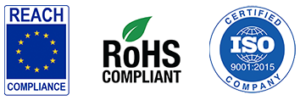In a recent case where Epoxyset was asked to custom formulate a product; the objective of the material was a potting compound to protect sensors in the pressurized pipeline industry. From our customer, the following was initially asked:
“Most of our tools are designed to inspect transmission and distributions pipelines of diameters 4” and larger and carrying petroleum based products such as crude oil, gasoline, propane, etc. We also have been involved in inspecting anhydrous ammonia lines for several years by adapting our “standard” tools with ammonia resistant materials. We are finding these materials, in particular the epoxies used to encapsulate our sensor electronics to be a problem in ammonia as we migrate our tools to newer, more sophisticated sensors. The epoxy tends to swell and soften causing electrical failure when ammonia reaches the electrical components. Some epoxies seem to be more resistant than others but all have been prone to this failure as the exposure times increase. I am hoping to find a product that will withstand exposures of up to 100 hrs before failure. Do you have such a product?”
Epoxyset was given the information of the chemical environment the potting material would be exposed to. First, it was decided that an epoxy potting compound would be the chemistry used for this application as epoxy has superior chemical resistance than compared to polyurethane or silicone products. We then zeroed in on the target rheology and viscosity range. This is where customer feedback and evaluation is extremely important in delivering the desired product.
After several weeks of sampling and running a full panel of tests on the properties of the product, Epoxyset developed a high temperature and chemical resistant epoxy potting compound able to be used in not only this application, but felt it was a product that could be used in several other harsh environment potting applications. The product that was developed is our EPOXICAST EC-1027E. When the customer tested the final product against several other compounds, EC-1027E outperformed all of them.
“Of the dozen or so encapsulants we’ve tested, EC-1027E has the lowest rate of swelling and the least amount of shrinking/cracking when removed from the ammonia. It also seems to provide the best resistance to ammonia related electrical shorting of the encapsulated sensors.”


